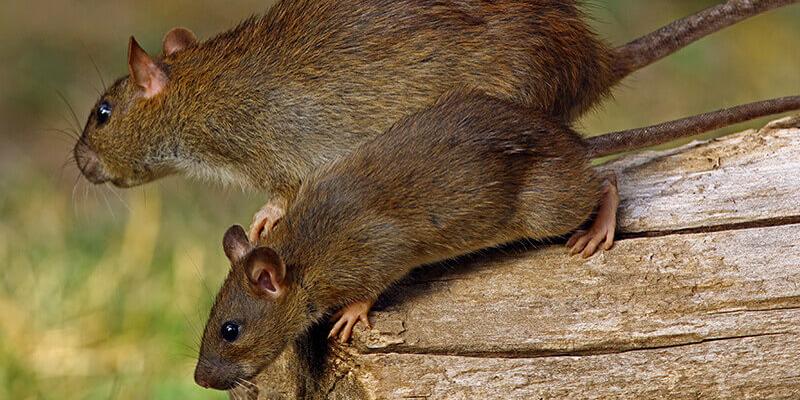Commercial Pest Control Tracking Tools For Better Safety
Share
In today's competitive business environment, the need for effective pest management solutions has never been more critical. Commercial pest control tracking tools play a pivotal role in ensuring businesses maintain a pest-free environment, which is essential for maintaining a company's reputation, ensuring compliance with health regulations, and minimizing financial loss. But how do these tools work, and why are they essential for businesses today?
The latest technology in pest management integrates advanced tracking mechanisms that monitor pest activities in real-time. By adopting these systems, commercial entities can proactively address pest issues before they escalate, thereby saving on the extensive costs associated with infestations.

Understanding Pest Tracking Technology
The technological advancements in pest control are designed to offer comprehensive solutions that go beyond basic visual inspections. These advanced tracking systems frequently include sensors, data analytics, and reporting tools that provide detailed insights into pest patterns and behavior. For instance, [Smart Traps for Facilities](https://trapx.io/blogs/news/smart-rodent-defense-for-facilities) offer a glimpse into the latest breakthroughs in rodent management.
Data-Driven Decision Making
With the advent of big data and analytics, pest management has become highly precise. Tools that aggregate information give businesses the ability to make informed decisions by identifying trends and metrics related to pest occurrences. These data-centric approaches can provide patterns that highlight vulnerable areas within a building or facility.
The Benefits of Implementing Tracking Tools
One of the primary benefits of utilizing commercial pest control tracking tools is enhanced efficiency. Stakeholders can better allocate resources and implement strategies that maximize pest deterrence while minimizing costs. Furthermore, these tools enhance transparency and accountability in pest management, as stakeholders can readily access records and verify that all necessary actions are being taken.
Improved Regulatory Compliance
For businesses operating in sectors with strict health and safety guidelines, such as the food industry, staying compliant with regulations is crucial. [Pest Management in Warehouses](https://www.ratsense.com/au/how-you-can-stop-rodent-infestation-in-warehouses/) provides insights into how tailored solutions help businesses maintain compliance while effectively combating pest infestations.
Minimized Business Disruption
Pest infestations can lead to significant operational disruptions. From delaying production to shutting down facilities, the impact can be costly. The proactive nature and real-time feedback of tracking systems allow companies to minimize such disruptions, ensuring smoother operational flow and increased productivity.
Choosing the Right Pest Control Tracking Tool
Each business has unique needs based on their industry, location, and infrastructure. This means that selecting the right pest control tracking tool involves understanding these distinct requirements. Here are a few considerations:
- Size and type of the facility
- Specific pest challenges faced
- Budget constraints
- Integration capabilities with existing systems
- Analytics and reporting features
Several articles, such as [Tech for Franchises](https://trapx.io/blogs/news/tech-enabled-pest-safety-for-franchises), emphasize how technology can be tailored to meet the bespoke needs of a business, ensuring optimal results.
Consulting with Experts
While the market is brimming with myriad options, its recommended to consult experts who can provide insights based on their experience and knowledge. Often, they can provide a detailed analysis and suggest bespoke solutions tailored to fit the specific operational needs of your business.
Future of Pest Management
The evolution of technology indicates a promising future for pest management. As the industry continues to innovate, we can expect tools that offer even more precision, integration capabilities, and user-friendliness. [Innovation in the Retail Sector](https://trapx.io/blogs/news/pest-control-innovation-in-retail) demonstrates how the retail industry is embracing these changes to enhance brand protection.
Incorporating AI and IoT
The integration of Artificial Intelligence (AI) and the Internet of Things (IoT) is set to redefine pest control. IoT devices can offer real-time data, augmenting the capabilities of pest control operatives with insights that facilitate faster reaction times.
These advances represent just the tip of the iceberg in the ongoing effort to enhance pest control strategies in commercial environments.

FAQ
What are commercial pest control tracking tools?
These tools are systems and applications designed to monitor, record, and manage pest activities within commercial settings. They combine various technologies such as sensors and data analytics to offer a comprehensive pest management solution.
How do pest control tracking tools aid in regulatory compliance?
Tracking tools provide detailed documentation and reports that showcase the effectiveness of a business's pest management efforts. This data-driven approach meets regulatory standards and keeps businesses prepared for inspections.
Can small businesses benefit from these tools?
Absolutely. Regardless of the size, every business can benefit from reduced pest risk, improved regulatory compliance, and potential cost savings. It's about choosing the right tool that fits the specific needs and budget.
This article contains affiliate links. We may earn a commission at no extra cost to you.
